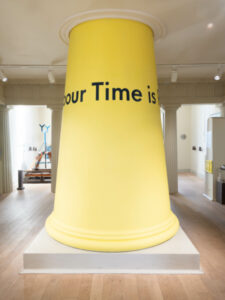
A new art exhibition in east Auckland explores questions relating to the inner workings of the human mind.
The showcase, entitled Who can think, what can think, is on at the Te Tuhi gallery in Pakuranga until May 7.
Te Tuhi communications and programme co-ordinator Sophie Elborough describes it as a “ground-breaking exhibition”.
It “addresses our understanding and experiences of both biodiversity and neurodiversity by challenging definitions of ‘intelligence’ in relation to human and non-human cognition”, she says.
“Engaging with the work of 13 artists and collectives from Aotearoa and overseas, the exhibition has been curated by Bruce E. Phillips, a New Zealander currently based in Edinburgh, Scotland.
“While conducting research for his PhD at Massey University, Bruce realised questions around neurodiversity and inclusion have never been addressed in the 50-year curating history of the major public galleries in Aotearoa.
“Moreover, it is not standard practice for exhibitions in this country to facilitate the inclusion of many neurodiverse people.”
Elborough says the exhibition seeks to being to readdress such silences through its subject matter and accompanying public event programme.
It also tries to ensure that accessibility is at the heart of the exhibition and as a result information on it is provided in a dyslexic-friendly format as well as audio, braille, easy-read, sign language and te reo.
And for visitors who want them it offers reading aids, accessibility and sensory maps, a quiet space and relaxed events.
The artists and collectives involved in the exhibition hail from around the world.
They include US artists Devin Ronneberg and Kite, Australians Laresa Kosloff and Prue Stevenson, Scots Neuk Collective and Simon Yuill, and Kiwis Bailee Lobb and Martin Awa Clarke Langdon, among others.
Elborough says works that value the minds and neural-networks of plants and non-human animals form the “spine” of the exhibition.
“Alongside these, and concerning the subject of human cognition, a number of works address how certain classifications of intelligence are linked to the control of information, language and social behaviour, with dehumanising results.
“Other works confront current discriminatory systems and propose ways that individuals and society can include a diversity of minds.”
The exhibition includes a programme of live events and will contribute to the collaborative project.
Who can think, what can think is at Te Tuhi, 13 Reeves Road, Pakuranga, until May 7.






